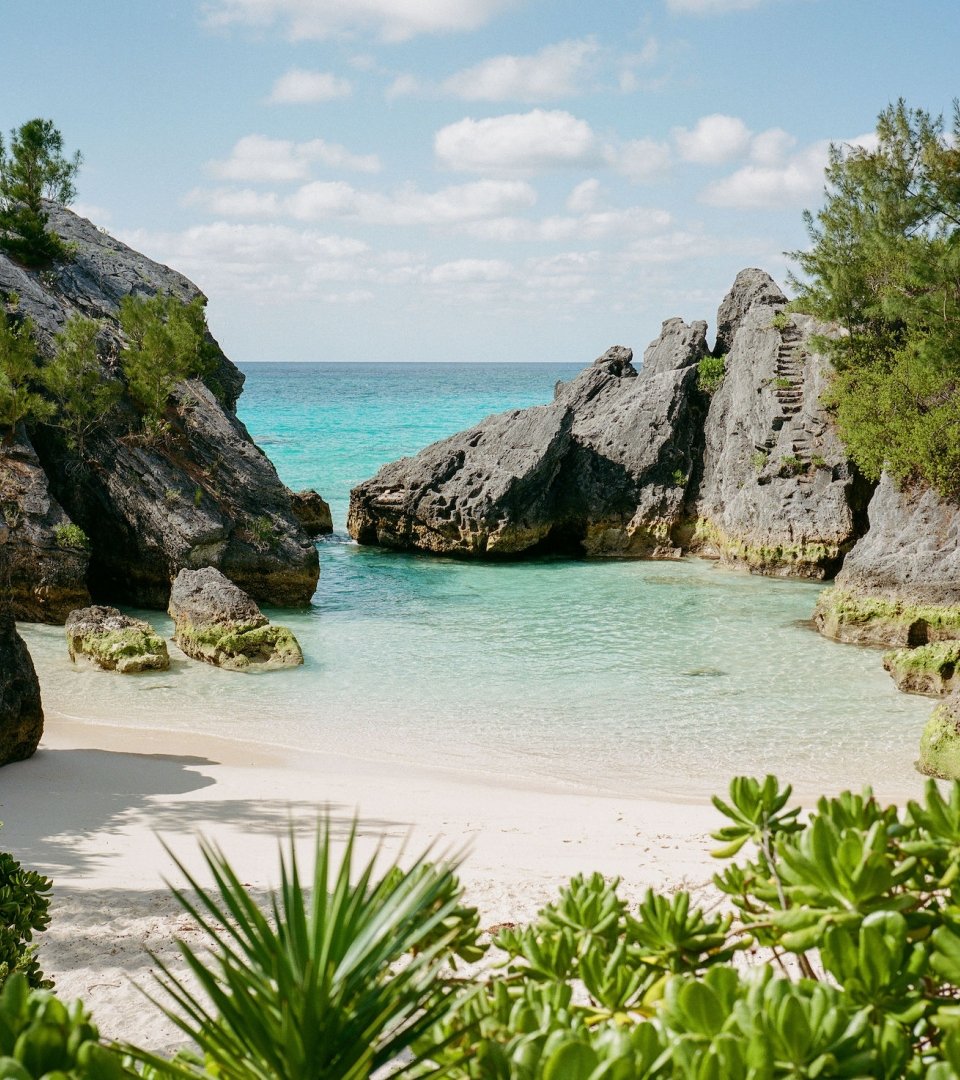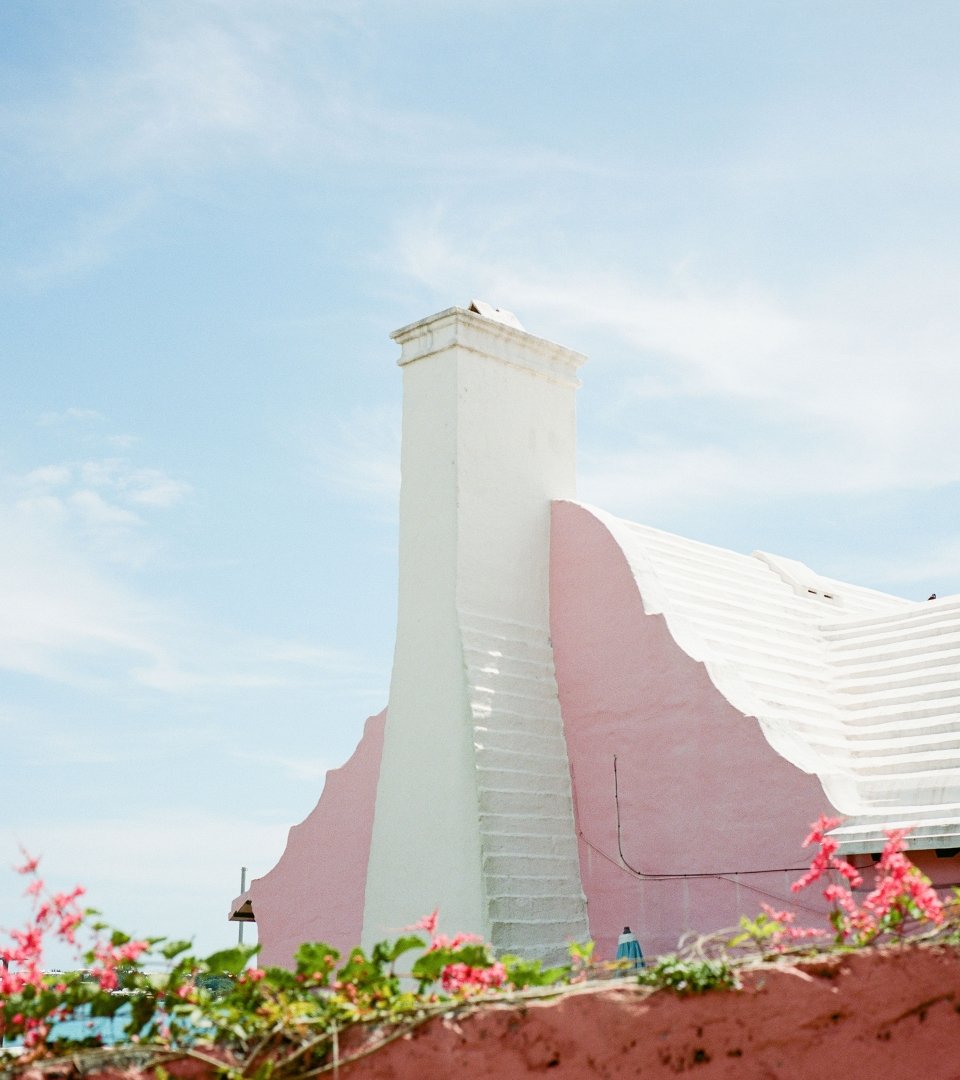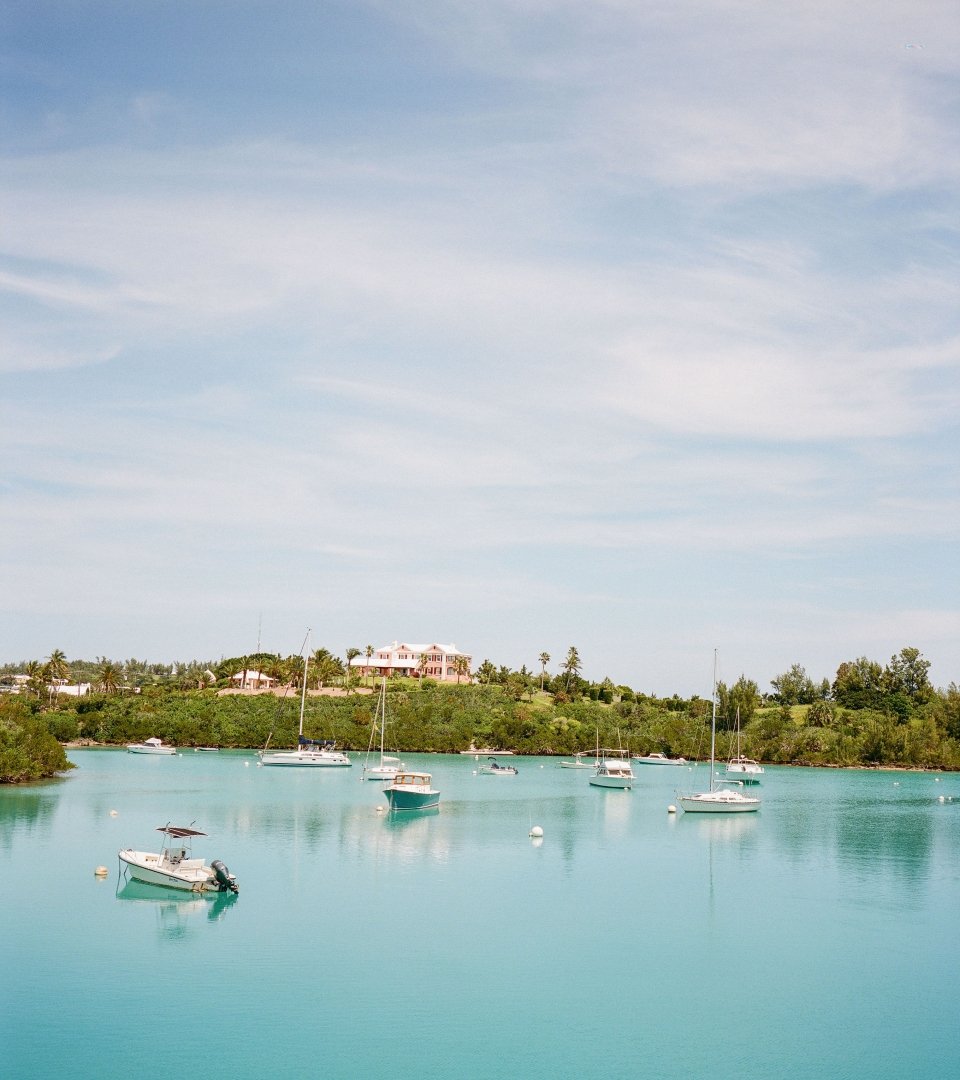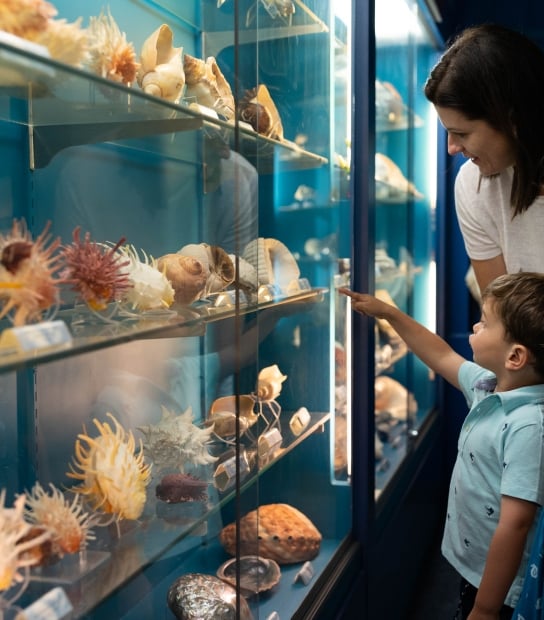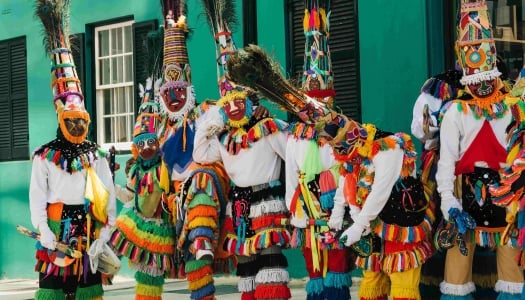Gombey Style: The Parts of A Bermuda Gombey Dancer’s Costume
Throughout the year (and especially on Boxing Day), you’ll see Bermuda’s iconic Gombey troupes dancing down the streets and alleys. The Gombey tradition on the island goes back to at least the early 1800s – it’s a vibrant blend of African, Native American, and Caribbean cultures. In other words, it’s extremely Bermudian.
- People & Culture
The Gombey tradition is very interactive. Within minutes, crowds gather around the Gombeys and start dancing to the Bermuda beat. The Gombeys appreciate a little cash if you’ve got it – the money goes toward making sure their elaborate costumes stay in good shape.
And what about those costumes? Each colourful piece from top to bottom has its own meaning and function (though all folklore traditions are subject to interpretation over time). Fans of each Gombey crowd can tell the troupes apart from their unique riffs on the traditional Gombey costume. Here’s a Gombey costume crash course:
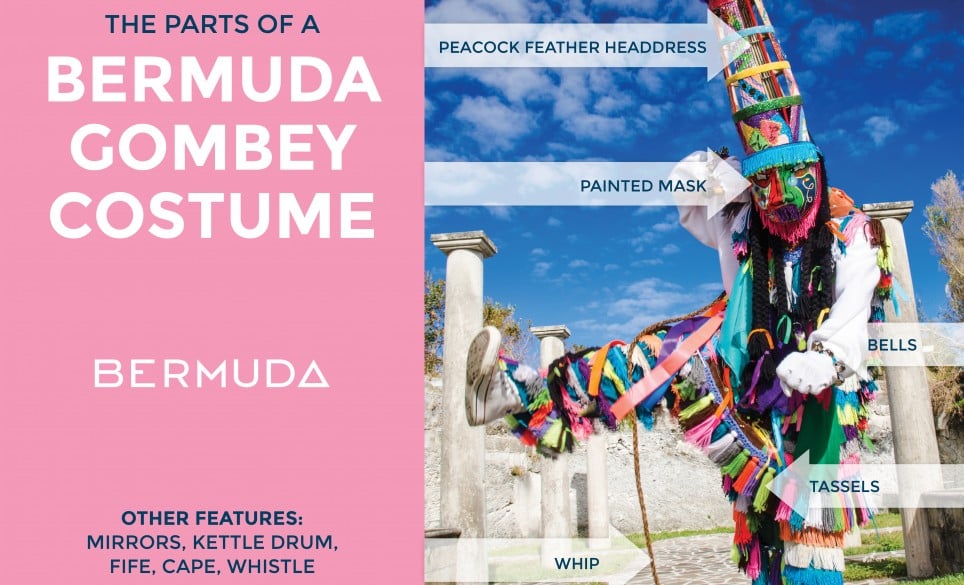
HEADDRESSES
Those towering headdresses that add a few feet to each Gombey dancer’s height are usually topped with peacock feathers (symbolizing pride and strength) and adorned with glitter. The stems are often dyed a variety of bright colours.
WHIPS
You can tell who the Captain of the troupe is by looking for the Gombey with the whip. Don’t worry, it’s just a symbol of his leadership of the troupe – though he may give it an impressive whirl as the Gombeys get down.
CAPES
The Captain also wears the longest velvet cape, usually black, but sometimes red, purple, green or blue. Capes are adorned with meaningful embroidery and embellishments, often relating to Bermuda’s root cultures’ folklore, customized for each dancer.
Good to know: Besides the Captain, keep an eye out for other Gombey "characters": The Wild Indian carries a bow and arrow and leads the group down the roads; the Chiefs carry a large tomahawk or shield and helps with the teaching; and the Warriors are usually younger children who carry small hatchets.
PERCUSSION
The word “Gombey” comes from an African word meaning “rhythm,” and rhythm is indeed very important. The infectious beat is provided by various percussion instruments, including a snare drum and goatskin bass drum. You'll also hear the high sounds of a fife adding melody to the proceedings.
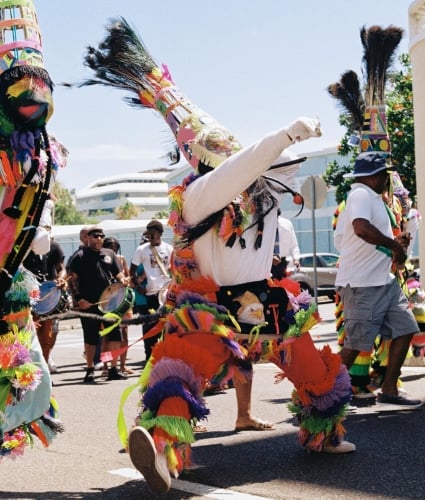
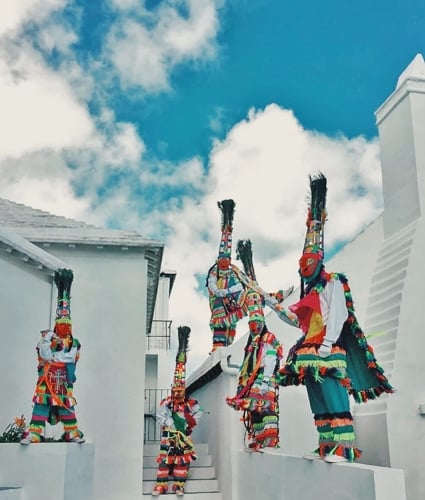
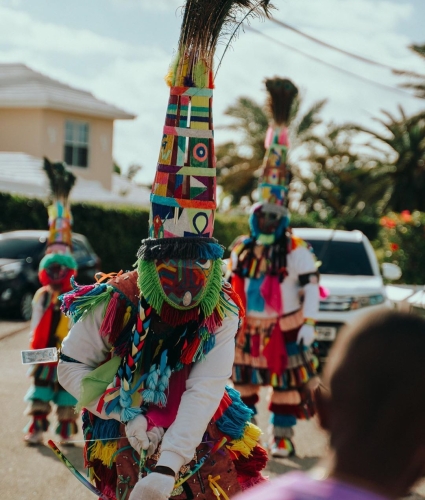
PAINTED MASKS
You won’t see a Gombey’s face when he’s performing – each has a handpainted mask. While many sport traditional designs, some Gombeys have recently begun to create more unique looks for their masks, reflecting the personality of the dancer. Why wear masks at all? The original reason is thought to be that enslaved individuals weren’t allowed to dance in public until emancipation in 1834, so the masks hid their identities.
BELLS
With every step the Gombeys take, every move they make, you’ll hear the tinkling of bells. Some say they represent the tinkling of chains as enslaved persons were moved from place to place. Bells are often attached to the dancers’ wrists and ankles, adding another sonic element to the mix.
TASSELS
When the Gombeys get going, they become a wonderful blur of colour and movement. It’s a visual feast that’s increased by the many multicoloured tassels attached to the costumes.
MIRRORS
Another stylish visual element some Gombeys add to their costumes? Tiny mirrors that reflect the sun in a flashy fashion. It’s not just for the look, however. Legend has it that the mirrors can ward off evil spirits.
